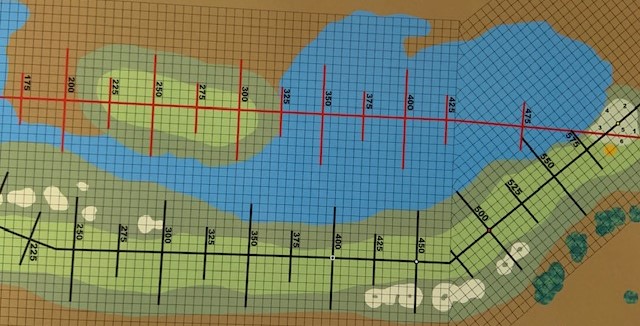If you ever wanted to play a ladies versus men tournament or have amateurs take on the pros, you’d likely use different tee boxes. But that would result in different pin locations. Of course, you could always just enter a number into the Carry cell of the Course Adjustment tool to account for the yardage distance between tees. But what if you have a hole with two different centerlines (CL) like #7 at Bluegrass? Pin location coordinates for the black CL aren’t anywhere close to what they are for the red CL.

The GC’s solution to this (and the tee box problem) is the Alternate Hole tool. With it, you can set two different pin locations for a hole and choose which ones apply to which golfer. This tool can be found at the bottom of every Course tab. Instructions for using it are right on the screen (not shown here). Basically, you just enter the alternate pin number, pin location coordinates and hole number. Then click on the Player numbers to tell the GC which golfers will be using the alternate pin. You can also enter alternate dogleg information, if that applies.

When you are done, simply click on the Xfer Hole button as you normally would, but enter “19” as the hole number when prompted.
Hole #7 at Bluegrass presents another challenge, both for the GC as well as regular APBA players. Starting at the 430-yard mark on the red CL, distance is measured in diagonals instead of the usual method, squares. Once you cross the water on the red CL, you may have a hard time figuring out where to put your ball marker.
I have created a separate Excel tool that converts red CL locations to black CL locations, which are much easier to work with (at least for me). All you do is enter your red Carry location from the GC into the spreadsheet boxes, and it will tell you where that is from the perspective of the black CL. It will also tell you the terrain for that location.

Below is a partial image of the look-up table that the conversion tool uses. Note that not every black CL location has a corresponding red CL location. By the same token, it is possible for a black CL location to have two different physical locations on the APBA course board because of the dogleg at the 470-yard mark. Neither of these is GC issues. Such is APBA math!

Until I get around to setting up downloads on this site, the best way to get a free copy of the Bluegrass Hole #7 conversion tool is to email me at smohler9@gmail.com. It comes with instructions.